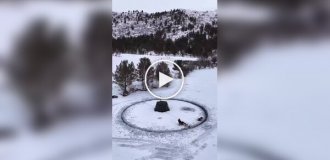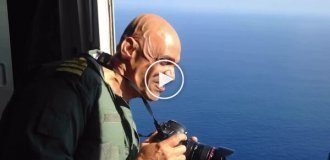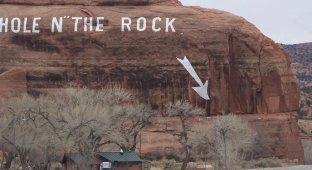Mysterious inscriptions on the Daytona stone and their possible authors (7 photos)
Greetings from antiquity are not very frequent, but they reach us from the depths of centuries. And they turn out to be tooth-crushing nuts over which the best minds of their time suffer. 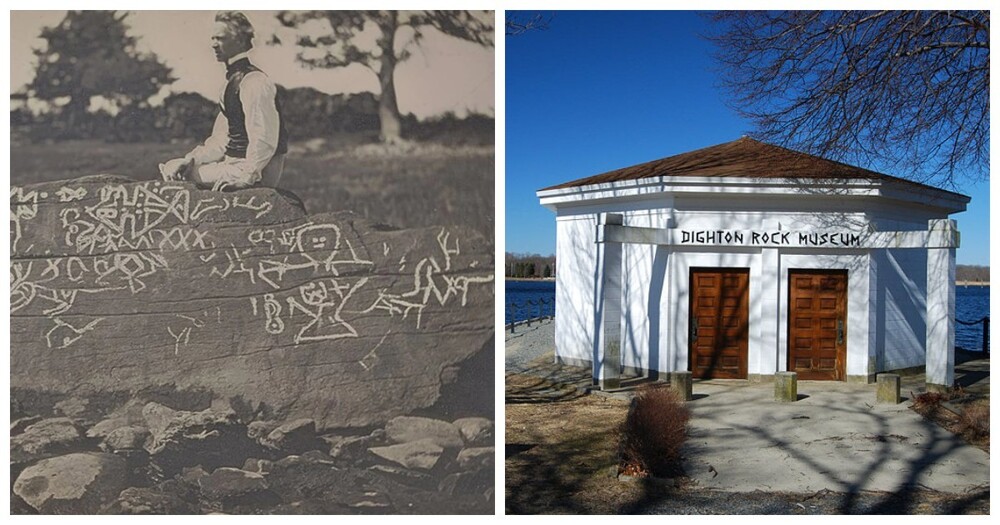
In the town of Berkeley, Massachusetts, there is an artifact the likes of which cannot be found anywhere else. A large stone was found in the bed of the Taunton River, named after the town that once stood there: Dighton. 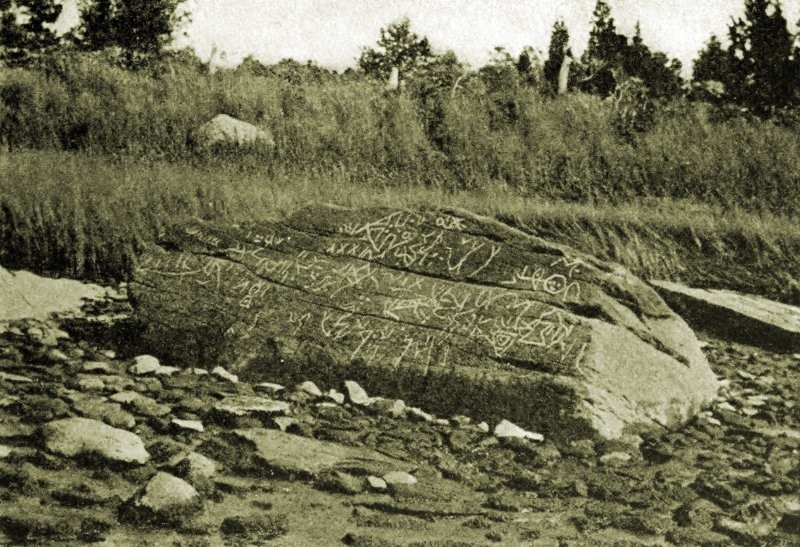
Dighton Rock at low tide, 1893
Since the 17th century, this strange object has aroused interest, and to this day it provokes controversy. But it is not the stone itself that is unusual, but the strange inscriptions carved on its surface.
Nobody knows who carved these strange signs on the rock. The petroglyphs, consisting mostly of straight lines and geometric shapes, are accompanied by very primitive drawings of people. It appears to be a mixture of both ancient and unknown languages.
Dighton Rock was first discovered in 1963 by construction workers at a nearby dam, and has been installed in a local park since 1971.
History of the stone 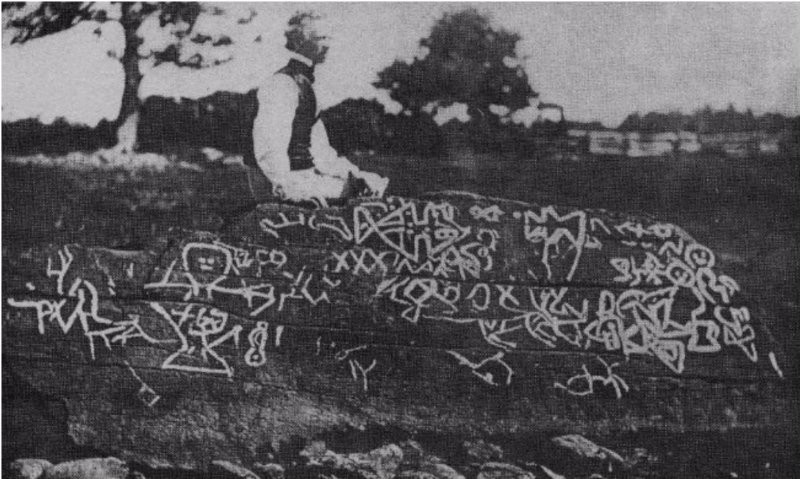
Artist Seth Eastman (c. 1853)
The stone itself is a rough hexagonal block with beveled edges. It is quite low, 1.5 meters high, almost 3 meters wide and 3.4 meters long. Formed from gray-brown crystalline sandstone with a coarse to medium-grained texture. According to experts, the stone weighs about 40 tons.
One of the first mentions of Dighton Rock appears to be in 1680, when English colonist Reverend John Danforth sketched it. He returned home with this sketch, which was saved and is currently kept in the British Museum.
Even at this early stage, however, the story is confusing. Danforth's drawing contradicts other reports about the stone made at the same time. In 1690, another local named Cotton Mather described the rock as follows: “On the perpendicular side where the river flows, which at high tide covers part of it, are very deeply engraved... strange symbols.” 
Copy of petroglyphs published in 1830
The rock remained a local curiosity until the 19th century. When fame came to her, as popular public figures and publications began to mention her. James Russell Lowell, a famous poet, even called on presidential candidates to support the project to decipher the message.
Unfortunately, this was never done. Today the stone remains as mysterious as when it was discovered.
Versions, assumptions, theories 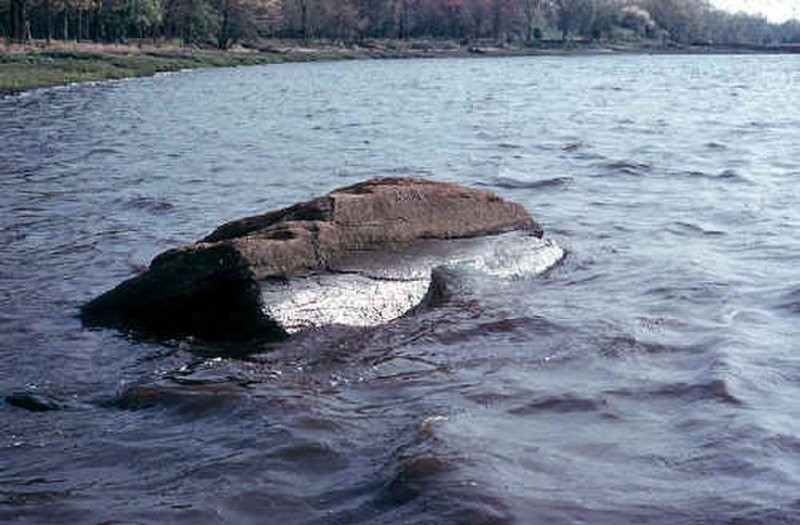
Dighton Rock at high tide, 1963
There are several different theories about the origin of the marks on the stone. One of the most popular is that these drawings were made by the indigenous people of North America. Indian petroglyphs are found almost throughout the continent.
It is known that for them, carving stones was a way to capture spiritual experiences, such as hallucinogenic visions. Additionally, in Native American culture, stones were used to record historical events, commemorate deaths, and mark boundaries. Perhaps the location of Daytona Rock in the middle of the river indicated the territorial marker of a certain Native American tribe. 
In 1963, a pavilion was erected for the rock
Another, perhaps more unusual, suggestion is that the inscriptions were made by the ancient Phoenicians or Normans. Both of these versions were put forward in the late 18th and early 19th centuries, but were rejected by archaeologists as requiring too much revision of history and being very impractical.
According to another, later version, the inscriptions could have been made by the Portuguese. This hypothesis was proposed in 1912 by Edmund Delebarre, who noticed Portuguese writing on the rock.
Delebarre claims that the stone has Latin in Portuguese style, which can be translated as: “I, Miguel Cortereal, 1511. In this place, by the will of God, I became the leader of the Indians."
Because of this, the artifact is particularly popular in Portuguese culture, where it is known as the "Rock of the Explorers of the State."
Mysterious symbols 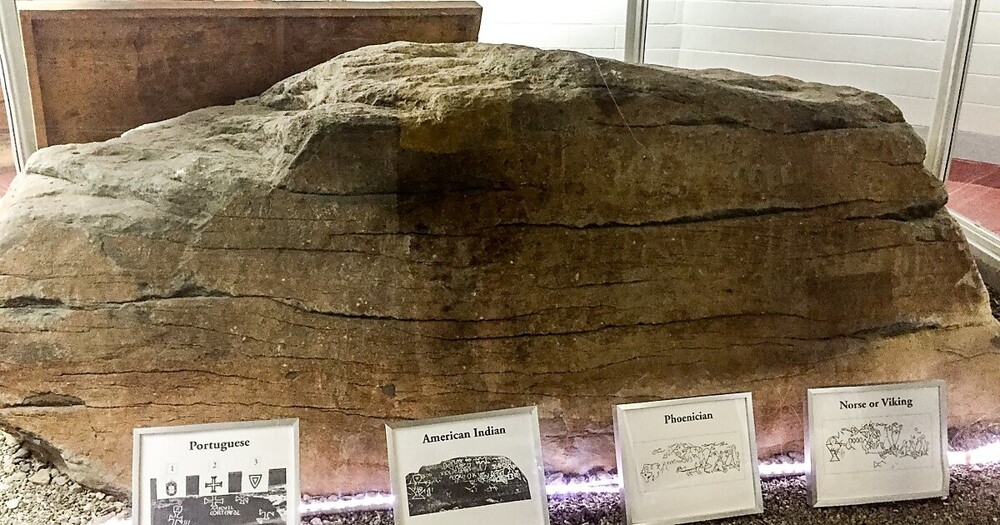
One of the meanings suggested by Delebarre is that the stone has a hypnotic effect on those who study it for a long time. It has been compared to the Rorschach test or ink blot test used by psychologists to access the subconscious. He suggested that those who study the rock are often confused by the marks, and so may see what they are looking for in the carvings.
However, no one has ever come to any concrete conclusions, and Dighton Rock remains a mystery to modern archaeology. Its carving has been studied many times, but no consensus on its creation or purpose has been reached. More and more theories are emerging, but without an indication of which culture the rock belongs to, the answer will most likely remain unfound.
But this does not exclude the possibility that travelers saw the drawing over the years and added to it themselves. This does not mean that the carving is fake. But it suggests that perhaps there is no one theory that explains everything, but rather several that must come together to reveal the truth.

